Biological Control of Pests Reading Answers
5 min read
Updated On
-
Copy link
Table of Contents

Limited-Time Offer : Access a FREE 10-Day IELTS Study Plan!
The Academic passage ‘Biological Control of Pests’ is a reading passage that appeared in an IELTS Test.
Ideally, you should not spend more than 20 minutes on a passage. Let’s see how easy this passage is for you and if you’re able to make it in 20 minutes. If not, try more IELTS reading practice tests from IELTSMaterial.com
Biological Control of Pests

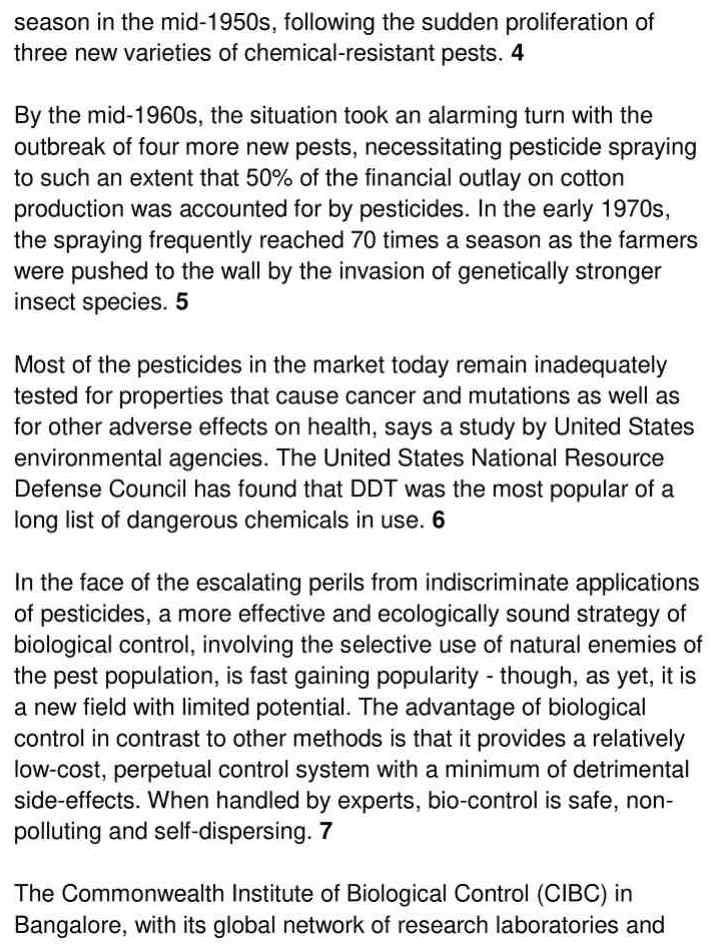

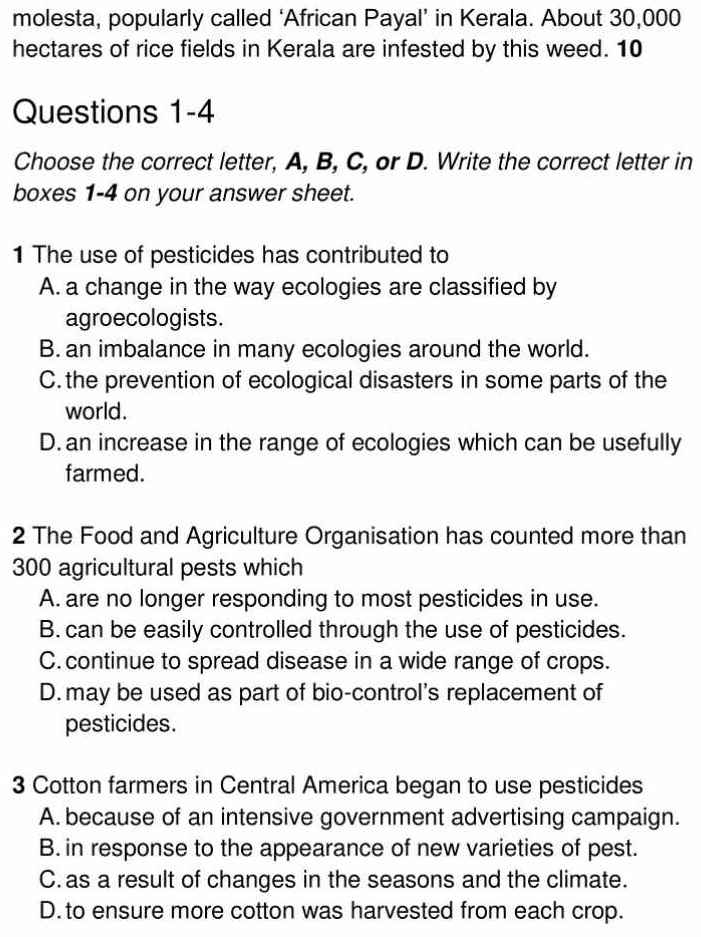
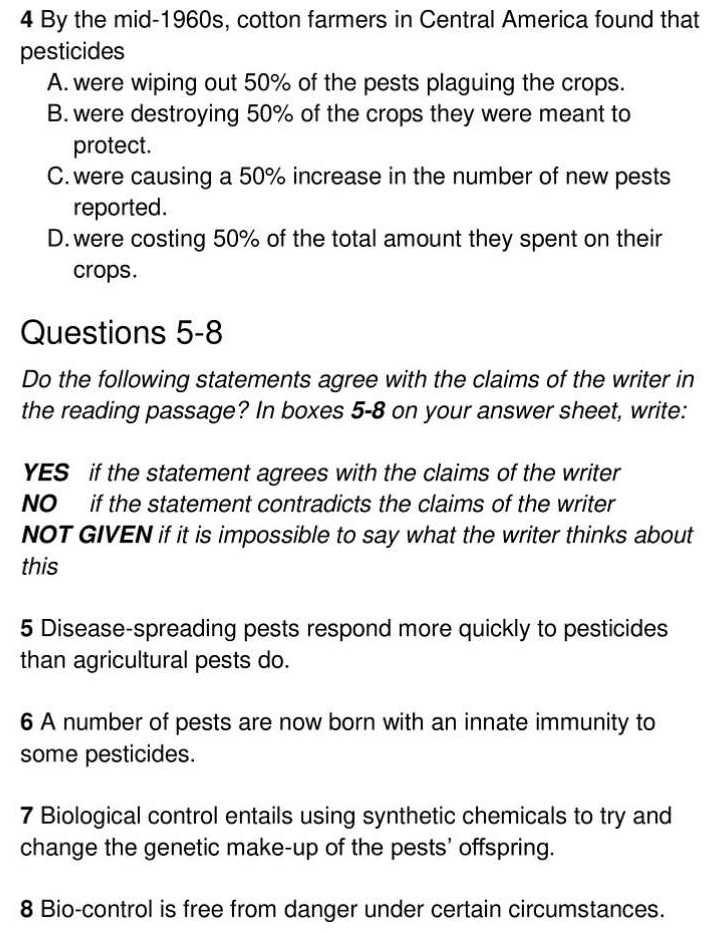
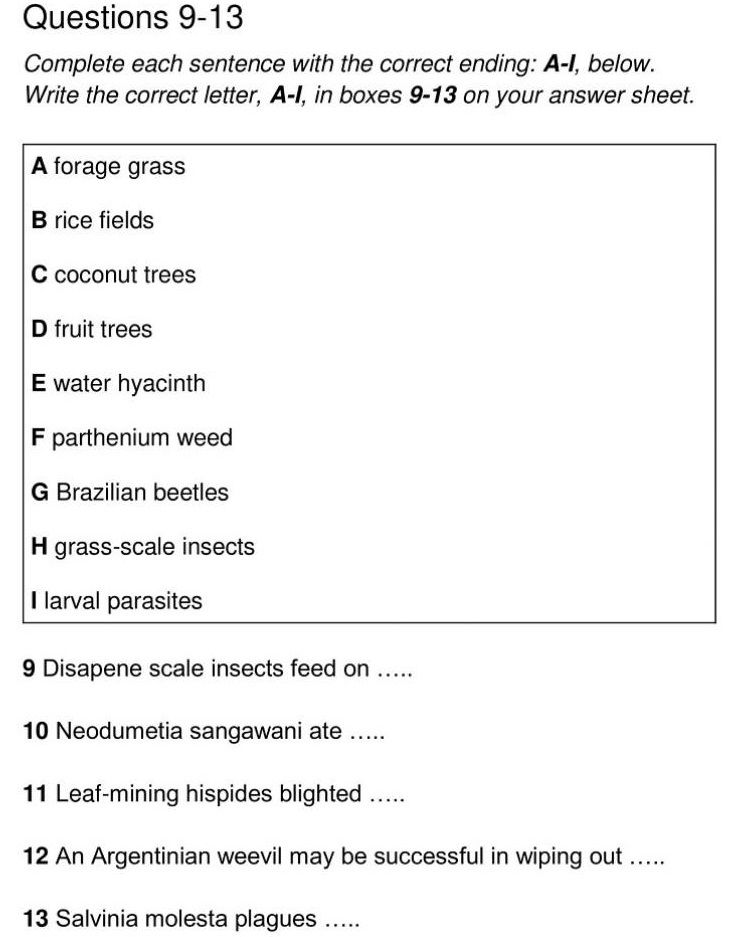
Answers
The answers to questions 1-13 are given below along with their explanations.
| Question Number | Answer | Keywords |
| 1 | B | Paragraph 1 informs that apart from engendering ‘widespread’ (around the world) ‘ecological disorders’ (imbalance in many ecologies), ‘pesticides have contributed’ to the emergence of a new breed of chemical-resistant, highly lethal superbugs. Hence, the answer is B (an imbalance in many ecologies around the world). |
| 2 | A | Paragraph 2 suggests that according to a recent study by the ‘Food and Agriculture Organisation (FAO)’, ‘more than 300 species of agricultural pests’ have ‘developed resistance’ (no longer responding) to ‘a wide range of potent chemicals’ (most pesticides in use). Hence, the answer is A (are no longer responding to most pesticides in use). |
| 3 | D | Paragraph 4 brings out the fact that in the early 1940s, basking in the glory of chemical based intensive agriculture, the cotton farmers in Central America avidly took to pesticides as a sure measure ‘to boost crop yield’ (to ensure more cotton was harvested from each crop). Hence, the answer is D (to ensure more cotton was harvested from each crop). |
Unlock Answers
| 4 | D | Paragraph 5 states that by the mid-1960s, the outbreak of four more new pests necessitating pesticide spraying to such ‘an extent that 50% of the financial outlay’ (50% of the total amount they spent on their crops) on cotton production was accounted for by pesticides’. Hence, the answer is D (were costing 50% of the total amount they spent on their crops). |
| 5 | NOT GIVEN | In paragraph 2, it is given that more than 300 species of ‘agricultural pests’ have developed resistance to a wide range of potent chemicals. Not to be left behind are the ‘disease-spreading pests’, about 100 species of which have become immune to a variety of insecticides now in use. As there is no specific comparison between the two types of pests, the answer is ‘NOT GIVEN’. |
| 6 | YES | Paragraph 3 shares the fact that because of their ‘tremendous breeding potential and genetic diversity, many pests’ are known to withstand synthetic chemicals and ‘bear offspring with a’ ‘built-in resistance’ (innate immunity) to pesticides. As the statement agrees with the claims of the writer, the answer is ‘YES’. |
| 7 | NO | Paragraph 7 conveys that in the face of the escalating perils from indiscriminate applications of pesticides, a ‘more effective and ecologically sound strategy of biological control’, ‘involving the selective use of natural enemies of the pest population’, is fast gaining popularity — though, as yet, it is a new field with limited potential. As the statement contradicts the claims of the writer, the answer is ‘NO’. |
| 8 | YES | Paragraph 7 claims that the ‘advantage of biological control’ in contrast to other methods is that it provides a relatively low-cost, perpetual control system ‘with a minimum of detrimental side-effects’ (free from danger). ‘When handled by experts’ (under certain circumstances), ‘bio-control is safe’, non-polluting and self-dispersing. As the statement agrees with the claims of the writer, the answer is ‘YES’. |
| 9 | D | Paragraph 9 tells us that CIBC is also perfecting the technique for breeding parasites that prey on ‘‘disapene scale’ insects’ that acts as ‘notorious defoliants’, that is, have a bad reputation of making the leaves fall off from the ‘fruit trees’ in the US and India.
Hence, the answer is D (fruit trees). |
| 10 | H | Paragraph 10 mentions that a natural predator indigenous to India, ‘Neodumetia sangawani’, was ‘found useful in controlling the Rhodes grass-scale insect’ that was devouring forage grass in many parts of the US. Hence, the answer is H (grass-scale insects). |
| 11 | I | Paragraph 10 discusses that in the late 1960s, when Sri Lanka’s flourishing coconut groves were ‘plagued’ (blighted) by ‘leaf-mining hispides’, a larval parasite imported from Singapore brought the pest under control. Hence, the answer is I (larval parasites). |
| 12 | E | Paragraph 9 reveals that the Hyderabad-based Regional Research Laboratory (RRL), supported by CIBC, is now trying out ‘an Argentinian weevil for the eradication of water hyacinth’, another dangerous weed, which has become a nuisance in many parts of the world. Hence, the answer is E (water hyacinth). |
| 13 | B | Paragraph 10 refers to the fact that By using Neochetina bruci, a beetle native to Brazil, scientists at Kerala Agricultural University freed a 12-kilometrelong canal from the clutches of the weed ‘Salvinia molesta’, popularly called `African Payal’ in Kerala. ‘About 30,000 hectares of rice fields in Kerala’ are ‘infested’ (plagues) by this weed. Hence, the answer is B (rice fields). |
Check More IELTS Reading Answers
Also check :
Practice IELTS Reading based on question types

Start Preparing for IELTS: Get Your 10-Day Study Plan Today!
Recent Articles

Nehasri Ravishenbagam

Haniya Yashfeen

Haniya Yashfeen

Haniya Yashfeen
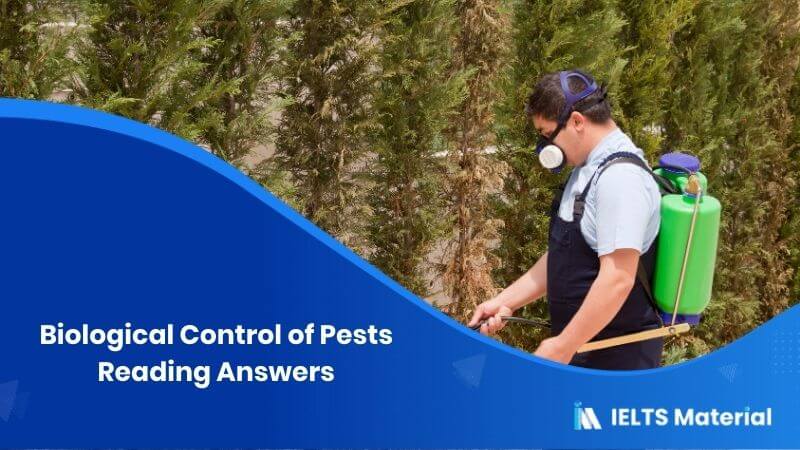



Post your Comments